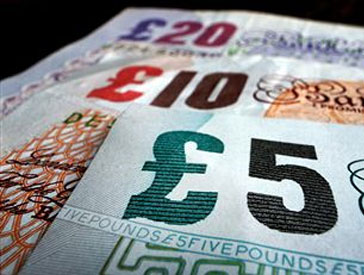Peer-to-peer Isas: the return of 6% interest rates?
Tax-free savings rates have been plunging, but a new class of Isa could reverse the downward trend

The prospect of tax-free peer-to-peer lending within Isas means things are looking up for savers after years of pitiful interest rates.
Returns of up to 6 per cent could be available once again – rates not seen since before the financial crisis began in 2008.
Here's our guide to what's happening, and how you can reap the benefits.
The Week
Escape your echo chamber. Get the facts behind the news, plus analysis from multiple perspectives.

Sign up for The Week's Free Newsletters
From our morning news briefing to a weekly Good News Newsletter, get the best of The Week delivered directly to your inbox.
From our morning news briefing to a weekly Good News Newsletter, get the best of The Week delivered directly to your inbox.
What is happening with peer-to-peer Isas?
The government has announced it is entering into a two-month consultation period to work out the best way to allow people to enjoy tax-free returns on peer-to-peer lending.
The plan is to work out a way to include peer-to-peer lending in Isas so that interest earned can be free from income tax or capital gains tax.
What is peer-to-peer lending?
A free daily email with the biggest news stories of the day – and the best features from TheWeek.com
With peer-to-peer lending, borrowers get their cash directly from savers. For example, a saver might choose to lend money out via Ratesetter. He or she deposits cash and gets an interest rate of up to 6 per cent per year over five years – far better than any returns offered by the banks or building societies. That money is then lent to individuals or businesses.
The return offered to savers is high as this is a riskier way to save than simply putting money in a bank account.
If you save in this way, you are not covered by the Financial Services Compensation Scheme, so if the company goes bust your savings could be lost. Also, you run the risk of the borrower not repaying your cash, although the larger peer-to-peer companies, including Ratesetter and Zopa, have contingency funds to make sure you get your savings back, plus interest, even if the borrower defaults.
Why is the government getting involved?
Peer-to-peer lending has boomed in recent years as savers look for better returns than the paltry interest rates offered by the banks and people struggle to get loans from traditional lenders.
The industry has grown by over 100 per cent a year, according to the Treasury, with over £1.6bn now lent by more than 100,000 lenders.
"We want to support savers," says Treasury minister David Gauke. "Peer-to-peer lending is an exciting, innovative new sector and it's right that investors who want to lend money via P2P platforms should be able to hold these loans in their Isa alongside more traditional investments."
Peer-to-peer lending has also helped lift the economy in recent years as businesses who couldn't borrow from the banks have been able to secure loans through sites such as Funding Circle. It estimates that up to 75,000 jobs could be created as a result of new loans if peer-to-peer lending is allowed within Isas.
Why the delay?
Before bringing peer-to-peer loans into the Isa fold, the government must first make several decisions. Most importantly, they will have to determine whether peer-to-peer savings will fall within cash Isas or investment Isas, or whether a whole new class of Isa will have to be created. This is an issue as it could affect returns for lenders. If peer-to-peer lending was allowed in investment Isas, that would mean the big investment brokers getting involved.
"A tie up with P2P and the big brokers would certainly make P2P more accessible, but they would want to take their cut," says Matt Gazeley, a spokesman for Zopa, in the Daily Telegraph. "That could be a problem, as the whole ethos of P2P lending is that the middle-man is cut out so lenders get to enjoy the profits. We want that to continue."
There are also concerns that a sudden flood of money coming into the system from Isa savers could cause problems for the companies trying to match up the money available with suitable borrowers. A sudden rise in available funds could tempt them to lend out money to companies that are less creditworthy, leading to a higher risk of defaults.
If peer-to-peer lending is allowed into Isas, it may also prompt calls for deposits to be covered by the Financial Compensation Scheme, like regular savings.
Nevertheless, if these details can be ironed out over the next two months, savers can look forward to the prospect of more interesting tax-free savings rates.
-
 Russia’s ‘weird’ campaign to boost its birth rate
Russia’s ‘weird’ campaign to boost its birth rateUnder the Radar Demographic crisis spurs lawmakers to take increasingly desperate measures
-
 Could smaller cars bring down vehicle prices?
Could smaller cars bring down vehicle prices?Today’s Big Question Trump seems to think so, but experts aren’t so sure
-
 2025’s most notable new albums
2025’s most notable new albumsThe Week Recommends These were some of the finest releases of the past year